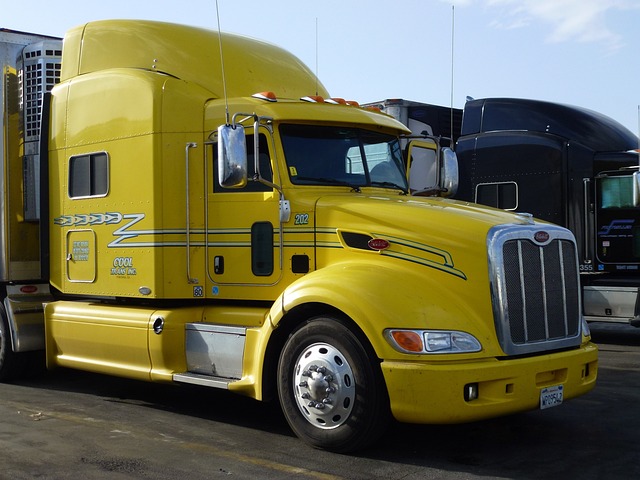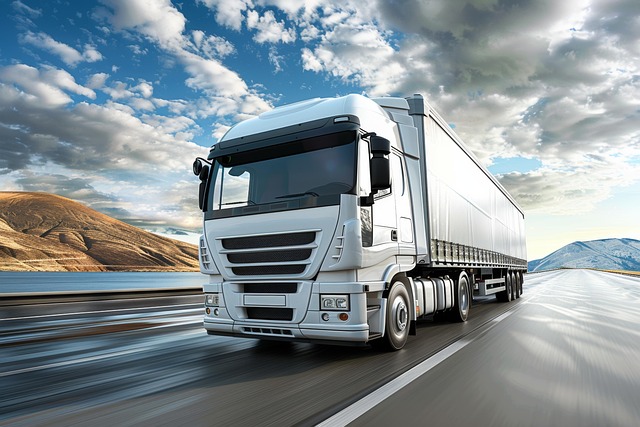Trucking fleet vehicles face unique risks including mechanical failures, weather incidents, and human error, making proactive risk mitigation crucial. Insurance providers assess high-risk areas through categorized damage types, prioritizing frequent occurrences to develop tailored strategies. Proactive measures like regular maintenance checks, advanced driver training, and telematics technology reduce damage likelihood, enhancing fleet safety and operational efficiency. Trucking fleet insurance provides comprehensive financial protection against vehicle damage, with integrated risk management tools enabling proactive hazard mitigation.
In the dynamic world of trucking, proactive risk management is key to maintaining a robust fleet and minimizing costly damages. This article guides you through essential strategies for protecting your valuable assets. We explore common risks plaguing trucking fleets, from mechanical failures to environmental hazards. Learn how to assess and prioritize potential damage scenarios, implement effective mitigation measures, and leverage the power of specialized trucking fleet insurance as a cornerstone in your risk management plan.
Understanding Common Risks to Trucking Fleet Vehicles

Trucking fleet vehicles face unique risks that demand proactive measures to mitigate potential damage. Common hazards include mechanical failures, weather-related incidents, and accidents caused by human error or unsafe driving conditions. Understanding these risks is the first step in creating a comprehensive risk mitigation strategy.
For trucking fleet insurance providers, identifying high-risk areas and implementing tailored solutions is crucial. This may involve regular vehicle maintenance checks to prevent breakdowns, advanced driver training programs to enhance safety awareness, and investment in cutting-edge telematics technology for real-time monitoring and incident response. By addressing these risks head-on, trucking companies can significantly reduce the likelihood of damage, ensuring the safety of their fleet and the efficiency of their operations.
Assessing and Prioritizing Potential Damages

When it comes to risk management for trucking fleet insurance, assessing and prioritizing potential damages is a strategic step that cannot be overlooked. This involves thoroughly examining various scenarios and identifying the most probable and critical risks associated with your vehicles. Start by categorizing potential damage types—from mechanical failures to accidents and environmental hazards. Each scenario carries its own set of consequences, impacting both operational efficiency and financial stability.
Prioritization is key as not all damages hold equal weight. Focus on identifying high-impact, frequent occurrences that could lead to significant losses. This targeted approach allows for the development of tailored mitigation strategies. For instance, if cargo theft is a recurring issue, implement robust security measures like GPS tracking and secure loading practices. By addressing these priorities, trucking fleet insurance providers can actively minimize risks and ensure the financial well-being of their clients.
Proactive Measures for Risk Mitigation Strategies

In the realm of trucking and fleet management, proactive measures are key to mitigating risks and minimising vehicle damage. One strategic approach is to implement a comprehensive safety training program for drivers, covering topics like defensive driving techniques, hazard recognition, and proper loading practices. Regular maintenance checks and inspections are equally vital; scheduling routine services, including tire rotations, brake tests, and engine tune-ups, can prevent costly breakdowns and accidents.
Additionally, advanced technologies play a significant role in risk mitigation. Fleets can adopt telematics systems to monitor driver behaviour, vehicle performance, and real-time locations, enabling swift response to potential issues. Utilizing these data-driven insights allows for informed decision-making regarding routing optimization and driver assignments, further reducing the chances of damage and enhancing overall fleet efficiency. Trucking fleet insurance providers often encourage such proactive strategies, recognising their value in risk management and cost savings.
The Role of Trucking Fleet Insurance in Damage Prevention

Trucking fleet insurance plays a pivotal role in proactive risk mitigation for vehicle damage. It acts as a robust safety net, providing financial protection against potential losses incurred by commercial vehicles during operations. By insuring an entire fleet, companies can ensure that each vehicle is covered, reducing the financial burden of repairs or replacements due to accidents, natural disasters, or other unforeseen events.
This type of insurance offers comprehensive coverage options tailored to meet specific trucking needs. Features such as liability protection, collision coverage, and roadside assistance help drivers navigate emergencies safely and efficiently. Moreover, advanced risk management tools often bundled with trucking fleet insurance enable companies to monitor vehicle performance, driver behavior, and maintenance records, thereby identifying potential hazards and implementing preventative measures before damage occurs.
By understanding common risks, assessing potential damages, and implementing proactive measures, trucking companies can significantly mitigate vehicle damage. A key component of this strategy involves leveraging the protective coverage provided by comprehensive trucking fleet insurance, which plays a vital role in preventing financial setbacks caused by unforeseen incidents. Adopting these practices ensures a safer, more secure future for fleets, promoting efficiency and reducing operational costs.
